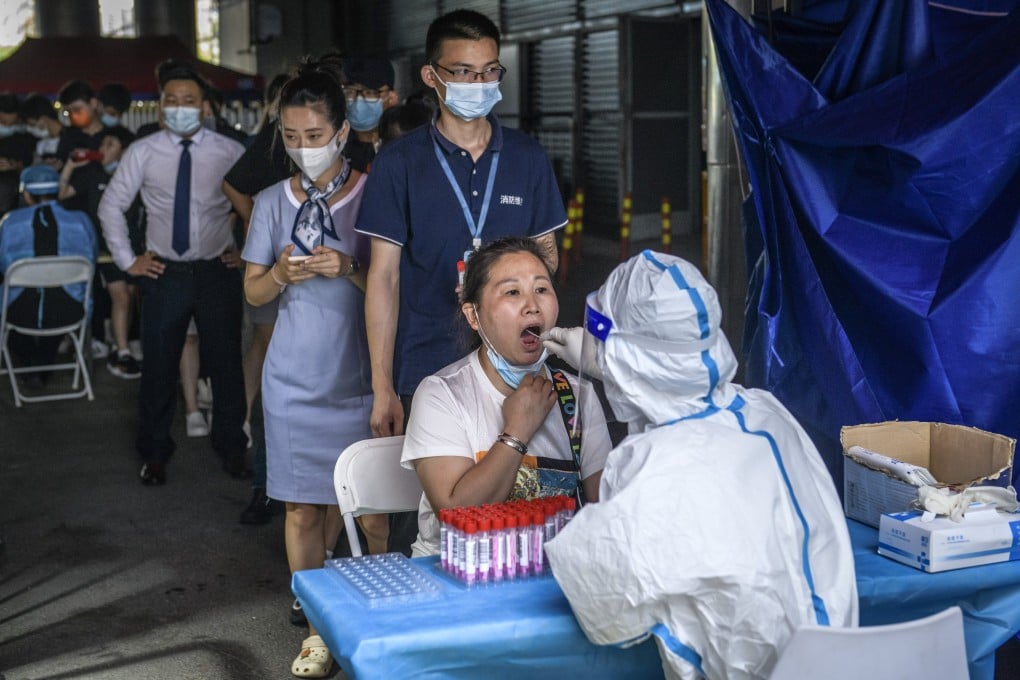Shenzhen tightens Covid-19 controls with 48-hour negative test result required to use public transport after three new cases found
- The stricter requirements come amid growing questions about the efficiency of mass testing in dealing with the Omicron variant
- Shenzhen was one of the first major Chinese cities to adopt regular mass testing as part of the ‘new normal’ after a mini outbreak in March

Shenzhen, the tech hub in southern China, has tightened its Covid-19 control policy, requiring a negative test result within 48 hours to enter subways and public venues, after three local asymptomatic cases were reported on Wednesday.
Starting from Friday, Shenzhen residents will need to present negative nucleic acid test results issued within 48 hours, or proof of a test taken within 24 hours, to ride the subway, use taxis and other public transport, or enter indoor premises, according to a notice issued by the local government on Thursday.
The stricter requirements, which are part of China’s dynamic-zero Covid-19 approach, come amid growing questions about the efficiency of mass testing in dealing with Omicron, which is less threatening to human health than previous variants.
Shenzhen was one of the first major Chinese cities to adopt regular mass testing as part of the “new normal” in Covid-19 control after a mini outbreak in March, a practice that was later followed by Beijing and Hangzhou. The tech hub of 17 million installed thousands of test booths and has been requiring negative test results within 72 hours to enter public venues.
The Shenzhen government did not specify how long the 48-hour negative test requirement will last.
While many countries are learning to live with Omicron, the Chinese government has maintained a strict zero-tolerance policy regarding the virus despite the growing economic and social costs.